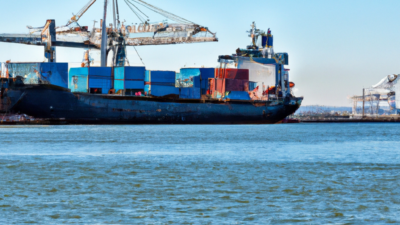**Where Are Commodities Prices Headed? An In-Depth Analysis of Market Trends and Future Projections**
In the ever-evolving landscape of the global economy, commodities play a crucial role as the fundamental building blocks of industry and trade. From crude oil and precious metals to agricultural products and raw materials, the prices of these essential goods are subject to a complex web of influences. As we navigate through 2023, the question on the minds of investors, policymakers, and consumers alike is: where are commodities prices headed?
In this article, we delve into the multifaceted factors that drive commodities markets, including geopolitical tensions, supply chain disruptions, technological advancements, and environmental policies. We will examine historical trends, current market conditions, and expert forecasts to provide a comprehensive outlook on the future of commodities prices. Whether you are a seasoned trader, a business owner, or simply someone with a keen interest in the global economy, this analysis aims to equip you with the insights needed to understand and anticipate the movements of commodities prices in the months and years to come.
Certainly! Here's a content outline for an article on "Where Are Commodities Prices Headed":
“`html
<!DOCTYPE html>
<html lang="en">
<head>
<meta charset="UTF-8">
<meta name="viewport" content="width=device-width, initial-scale=1.0">
<title>Where Are Commodities Prices Headed</title>
<style>
body {
font-family: Arial, sans-serif;
line-height: 1.6;
margin: 0;
padding: 0 20px;
}
h1, h2, h3 {
color: #333;
}
p {
color: #555;
}
.section {
margin-bottom: 20px;
}
</style>
</head>
<body>
<h1>Where Are Commodities Prices Headed</h1>
<div class="section">
<h2>Introduction</h2>
<p>Commodities play a crucial role in the global economy, influencing everything from the cost of goods to the health of national economies. As such, understanding the direction of commodity prices is essential for businesses, investors, and policymakers. This article explores the factors influencing commodities prices and provides insights into potential future trends.</p>
</div>
<div class="section">
<h2>Current Market Overview</h2>
<p>The current state of the commodities market is shaped by a variety of factors, including supply chain disruptions, geopolitical tensions, and changes in global demand. Recent trends indicate significant volatility, with prices for key commodities such as oil, gold, and agricultural products experiencing substantial fluctuations.</p>
</div>
<div class="section">
<h2>Factors Influencing Commodity Prices</h2>
<h3>Supply and Demand Dynamics</h3>
<p>Supply and demand are fundamental forces in determining commodity prices. Changes in production levels, such as oil output from OPEC countries or crop yields affected by weather conditions, can lead to significant price shifts.</p>
<h3>Geopolitical Factors</h3>
<p>Geopolitical events, such as conflicts, trade wars, and sanctions, can disrupt the supply chains and affect commodity prices. For example, tensions in the Middle East often lead to volatility in oil prices.</p>
<h3>Economic Indicators</h3>
<p>Economic data such as GDP growth, employment rates, and inflation can influence commodity prices. A strong economy typically increases demand for commodities, driving prices up, while a weak economy can have the opposite effect.</p>
<h3>Technological Advances</h3>
<p>Technological innovations can impact commodity prices by altering production costs and efficiency. For instance, advancements in renewable energy technology can affect the demand for fossil fuels.</p>
</div>
<div class="section">
<h2>Future Trends in Commodity Prices</h2>
<h3>Renewable Energy and Sustainability</h3>
<p>The shift towards renewable energy and sustainable practices is expected to have a long-term impact on commodity prices. As countries invest more in green technology, the demand for materials like lithium and cobalt, used in batteries, is likely to rise.</p>
<h3>Climate Change</h3>
<p>Climate change poses risks to agricultural commodities through extreme weather events, which can disrupt production and supply chains. This could lead to increased volatility in prices for crops and livestock.</p>
<h3>Global Economic Recovery</h3>
<p>The pace of global economic recovery post-pandemic will significantly influence commodity prices. A robust recovery could boost demand for industrial commodities, while a sluggish recovery might keep prices subdued.</p>
</div>
<div class="section">
<h2>Conclusion</h2>
<p>Predicting the future direction of commodity prices is inherently challenging due to the multitude of influencing factors. However, by closely monitoring supply and demand dynamics, geopolitical developments, economic indicators, and technological advancements, stakeholders can make more informed decisions. As the world navigates through economic recovery and addresses sustainability challenges, the commodities market will continue to evolve, presenting both opportunities and risks.</p>
</div>
</body>
</html>
“`













